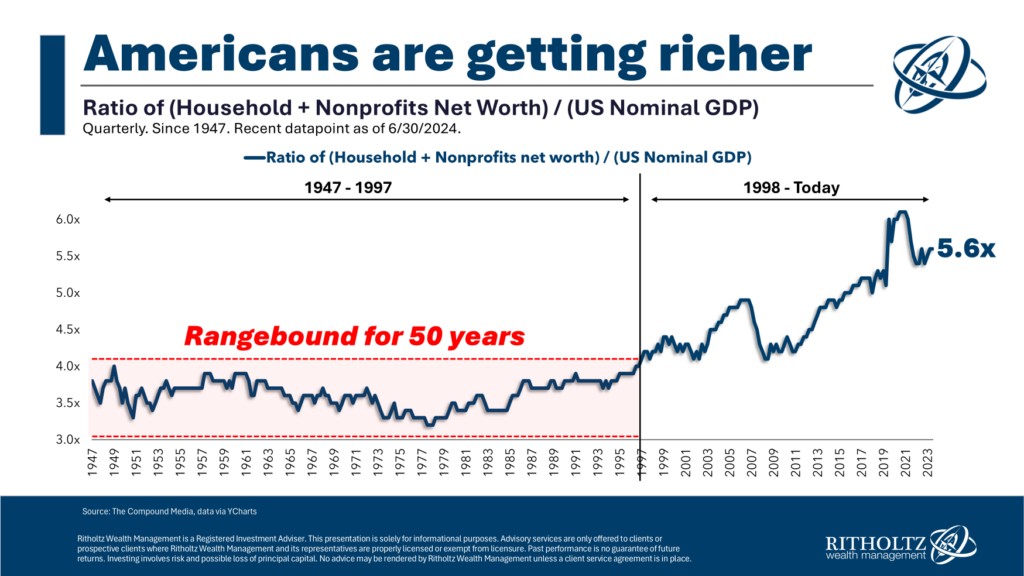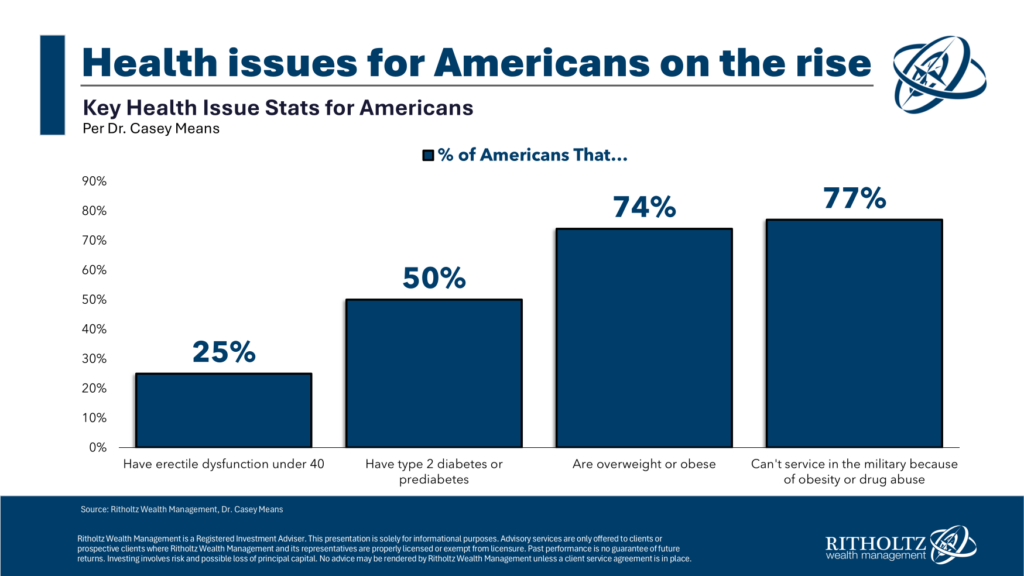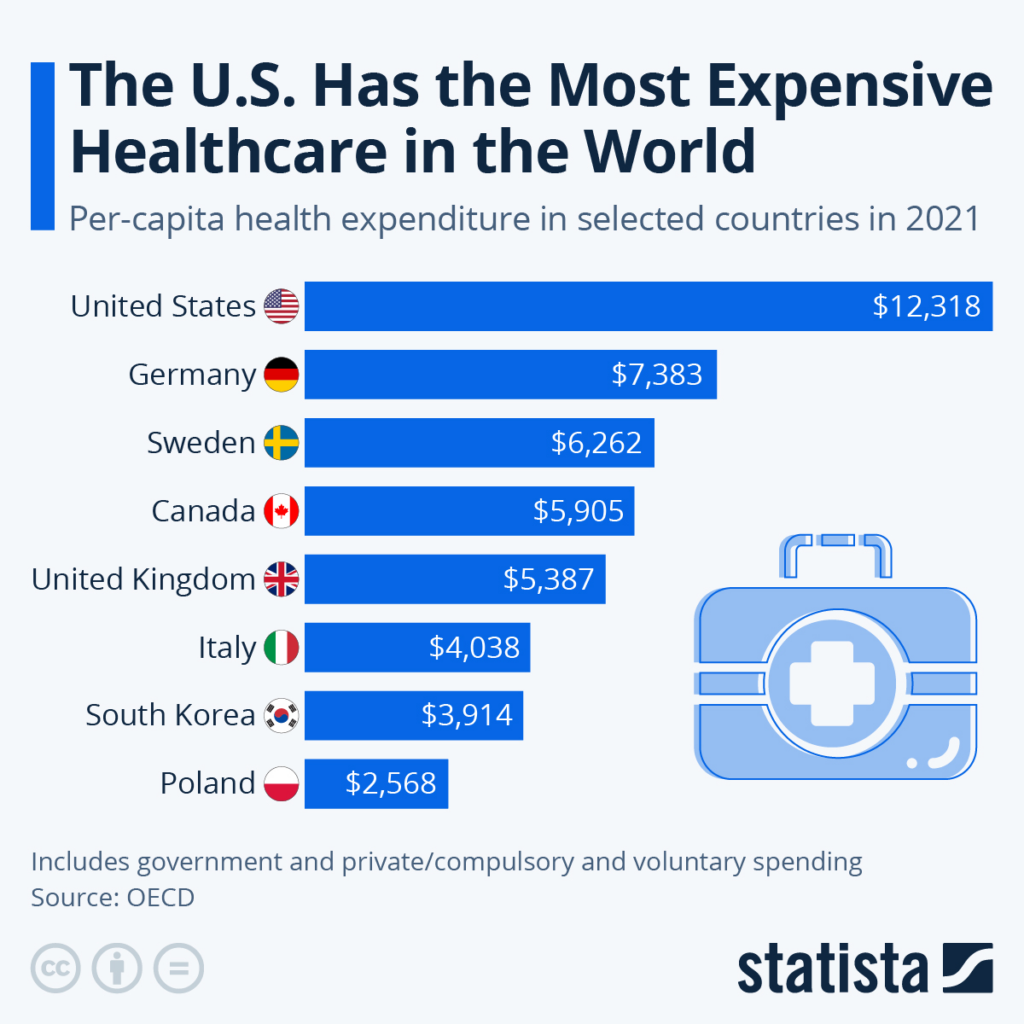Generational health is generational wealth.
America is, in many ways, a wealthy nation.

Our preeminence is valid if we measure wealth by material items like G.D.P., Stock Market Valuation, and Per Capita Income.
Unfortunately, just because something is easy to measure doesn’t make it the top priority regarding a prosperous life.
Lawrence Yeo explains this beautifully in his post-Metric-Less Success.
Everything we value flows downstream from our physical health. Money is desirable only if you have the vitality to pursue it. A career is meaningful only if you have the Energy to keep it going. Even time with family can be vibrant only if you’re free from pain.
If we rate America by the health of its people, we are a penny stock.
Casey Means, M.D., describes healthy people as having good Energy or proper metabolic health. Proper metabolic health efficiently transforms food into Energy without toxic waste products, powering the body’s 37 trillion cells.
Anyway, you measure it, and our metabolic health is in shambles. The majority of Americans suffer from Bad Energy. Our cells become impaired by the food we eat, environmental poisons, stress, sedentary lifestyles, and poor sleep habits. Bad Energy causes organs to fail and is the source of chronic disease, which has become the number one threat to the future prosperity of our great nation.
Is a country wealthy if it possesses these sobering stats?

74% of Americans are overweight or obese.
Over 50% of U.S. adults suffer from at least one chronic disease
Young adult cancers have gone up 79% in the last ten years.
50% of Americans have type 2 diabetes or prediabetes.
Infertility is going up 1% a year.
77% of young Americans can’t serve in the military because of obesity or drug abuse.
25% of men under 40 have erectile dysfunction
The average 60-year-old in 1984 had a higher testosterone than an average 27-year-old today.
Americans eat 700-3,000 percent more fructose than 100 years ago.
The rate of childhood obesity has more than tripled since the 1970s.
Suicide is now the second leading cause of death for young adults ages ten to thirty-four.
Eighty percent of American Farm Bill Subsidies went to components of processed food, such as corn, grains, and soy oil.
The American Diabetes Association receives millions of dollars of funding from companies like Coca-Cola.
Sixty percent of calories adults in the nation consume come from ultra-processed garbage foods.
A Fruit or Vegetable you eat today has up to forty percent fewer minerals, vitamins, and less protein than foods consumed seventy years ago.
If you think the only solution to this myriad of health problems is more pills, you’re probably selling them.
Why do we have this fallout while spending more than any other nation on healthcare?

The answer is simple. Hospitals, Big Pharma, Medical Schools, and Insurance companies make more money when people are sick than when they are healthy.
It’s not hard to diagnose a problem when the incentives are clear. It’s no accident that 99% of investors own whole life insurance policies they don’t need and that top producers receive the highest commissions on these products.
In health care, the stakes are much higher.
According to Dr. Means, many Doctors have variable pay based on RVUs, a measure of their productivity based on billing codes. Hospitals expect doctors to hit a minimum number of RVUs manually.
These administrative quotas create a perverse incentive to focus on expensive treatments rather than preventing disease.
Most Doctors don’t go through grueling schooling and training to make money. There are far easier paths if a high salary is your goal. Healthcare professionals are some of our workforce’s most dedicated, thoughtful, and hard-working individuals. They want to help people but are in a system that profits when people are sick and loses when they are in good health, making their noble task difficult.
The stress of the system also damages the mental and physical health of Doctors. Suicide rates and burnout are prevalent in the industry. Approximately 400 Doctors a year kill themselves. This statistic is equivalent to about four medical school classes dropping dead annually!
The good news is that this problem is solvable. The answer is to focus on prevention instead of only treatment. The bad news is that it’s not easy to turn around a multi-trillion-dollar ocean liner filled with the wrong incentives.
One thing is for sure: there are indefinite ways to measure wealth.
A record close of the S&P 500 is nice but doesn’t make us wealthy.
Source: Good Energy by Casey Means, MD
Charts: The Cahrt Ninja, Matt Cerminaro





